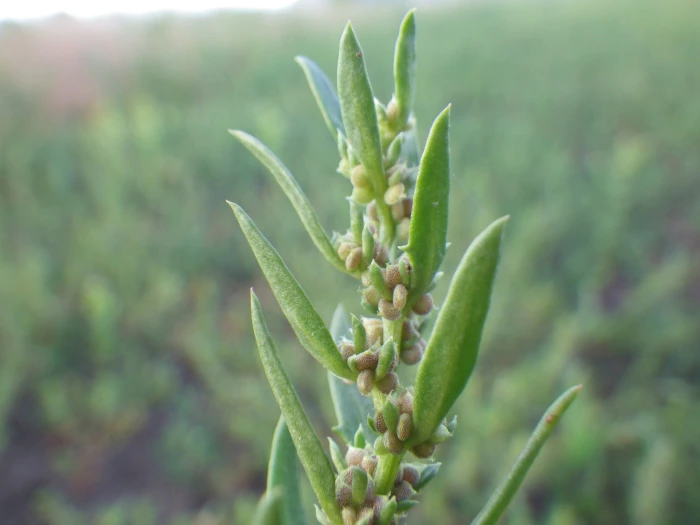Nuttall’s Povertyweed
(Blitum nuttallianum)
Nuttall’s Povertyweed (Blitum nuttallianum)
/
/

Matt Lavin
CC BY 4.0

























Estimated Native Range
Climate Requirements for Broomfield, Colorado
| This Plant | Your Site | Plant Suitability for Your Location | ||
|---|---|---|---|---|
| • Precipitation | 3" - 89" | 17" | Your precipitation may be too high for this plant. | Too high |
| • High Temp. | 58°F - 111°F | 89°F | Your summer temperatures are normal for this plant. | Excellent |
| • Low Temp. | -30°F - 52°F | 16°F | Your winter temperatures are normal for this plant | Excellent |
Summary
Nuttall’s povertyweed is valued for its historical use as a food source and its potential use in xeriscaping due to its low water requirements. It thrives in full sun and well-drained soils, making it suitable for rock gardens, native plant gardens, and restoration projects. It is also recognized for its medicinal properties, having been used by indigenous peoples for various ailments. Gardeners should be aware that it can self-seed and spread if conditions are favorable, potentially becoming weedy in some settings.CC BY-SA 4.0
Plant Description
- Plant Type:
- Height: 0.5-1.5 feet
- Width: 0.5-1.5 feet
- Growth Rate: Moderate
- Flower Color: Green
- Flowering Season: Summer
- Leaf Retention:
Growth Requirements
- Sun: Full Sun, Part Shade
- Water: Low
- Drainage: Fast, Medium
Common Uses
Drought Tolerant, Edible*Disclaimer: Easyscape's listed plant edibility is for informational use. Always verify the safety and proper identification of any plant before consumption., Low Maintenance
Natural Habitat
Native to dry, open habitats such as grasslands, chaparral, and desert scrub in the western United States
Other Names
Common Names: Nuttall’s Goosefoot , Poverty-Weed , Nuttall’s Monolepis , Common Povertyweed , Spear-Leaved Goosefoot
Scientific Names: Blitum nuttallianum , Blitum chenopodioides , Chenopodium arcticum , Chenopodium trifidum , Monolepis chenopodioides , Monolepis chenopodioides var. trifida , Monolepis nuttalliana , Monolepis patagonica , Monolepis trifida
GBIF Accepted Name: Blitum nuttallianum